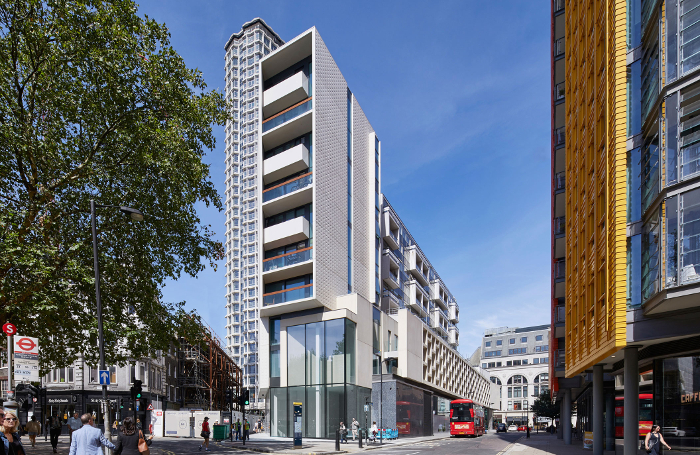What’s in a name? For most architects’ practices it’s a great deal: it’s the brand, it’s the reputation carefully built over the years that becomes trusted by existing clients and interesting to new ones. So rebranding is not to be taken lightly, and when the name to be jettisoned happens to be one of the best known figures in UK practice, the exercise takes on a whole new dimension.
It’s almost six years since Rick Mather died, aged 75, still putting his mark on projects until illness finally prevented him, and three years since Rick Mather Architects became MICA, since when the practice has gone on to win new plaudits, expand into new areas of work, and has doubled in size.
Its two partners, Gavin Miller and Stuart Cade, think they got the rebranding process right. Rick Mather is still a legacy they can look back on, but not a reputation they have to trade off, although both will quickly add that the practice remains steeped in his design ethos.

Tellingly, perhaps, the old practice name can still be found in small letters at the bottom of the sign outside the Camden High Street office, and there is still a Rick Mather website linking through to MICA Architects.
‘He knew he wasn’t going to be around, he knew it was coming. The timing could not have been more brutal, but we knew how the practice operated, we knew what to do, most of the jobs we were running together already,’ recalls Cade.
There was a succession plan: Mather gifted the practice to his two lieutenants during his illness, keeping the transaction as simple and informal as possible. He had always made it clear that he never wanted to retire, and it was understood that his two existing partners were the safety net when he could no longer work and would eventually take over.
‘We knew we were being watched. We knew we had to prove ourselves in public. But thirty to forty clients all stuck with us, with not even a “can we come and talk to you”. They didn’t appear to think twice,’ says Miller.
With one jarring exception, a competition win for the Peabody Essex Museum in Salem, Massachusetts, which was abruptly taken off the practice without the client even waiting for the funeral to take place.
It was three years later that the rebranding came about. ‘It felt right when the moment came. Several things were converging, the legacy projects were finished or winding down and we were getting a reputation for new things, such as urban masterplanning and conservation,’ says Cade.
Things have moved on from the days when rising partners just waited to add their names to a lengthening list of surnames on the door and the letterhead. Many of these were replaced long ago by acronyms and, for some reason peculiar to architecture, experiments with punctuation marks. Then came the get-noticed concept names: FAT, MUTT, HÛT…
The practice went through all sorts of ideas on the way to MICA, testing them out internally and getting the receptionist to test how “hello… xxx architects” sounded on the phone. Playful concept names were rejected as not appropriate when there was a long list of clients and a solid legacy of projects to build upon.
In many ways Mather was a signature architect with an enviable reputation in higher education, housing, arts and, of course, Oxford University, where the stream of sensitive additions to its historic colleges has continued.
At the same time, Mather was always happy to hand considerable responsibility to younger talented staff, which helped put the practice on a sound footing when he was no longer there.
A footnote to the succession, to be written shortly, will be a new online Rick Mather archive. Far from quietly dropping the old RMA website at some point in the future, the practice is currently working on replacing it with a comprehensive record of his works and projects, which Miller and Cade say will demonstrate just how impressive it was.
‘Rick liked to put his mark on things. We like to think we have been respectful to this and the practice is still steeped in his ethos. We think he would like what we have done,’ says Miller.
Thanks to Gavin Miller and Stuart Cade, Directors, MICA Architects.
Text by Neal Morris. This is a Professional Feature edited by the RIBA Practice team. Send us your feedback and ideas
RIBA Core Curriculum Topic: Business, clients and services.
As part of the flexible RIBA CPD programme, Professional Features count as microlearning. See further information on the updated RIBA CPD Core Curriculum and on fulfilling your CPD requirements as an RIBA Chartered Member.
Posted on 31 January 2019.









